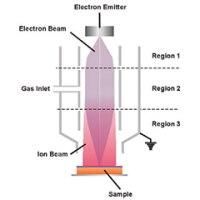Offer fully automated multi-technique analysis along with high throughput without sacrificing research grade results with the Thermo Scientific™ Nexsa™ X-Ray Photoelectron Spectrometer (XPS) System. Integration of multiple analytical techniques like ISS, UPS, REELS and Raman allows users to conduct true correlative analysis, unlocking the potential for further advances in microelectronics, ultra-thin films, nanotechnology development and many other applications.
Material Analysis and Development
The Nexsa spectrometer delivers flexibility to maximize the potential of your material. Flexibility in the forms of multiple-integrated technique options for true correlative data analysis and high throughput while maintain research quality results.
Optional Upgrades: Add any of the integrated and fully automated techniques to your analysis. Run at the touch of a button.
SnapMap
Bring sample features into focus with SnapMap’s optical view. The optical view helps you pint point areas of interest quickly while developing a fully focused XPS image to further define your experiment.
1. X-rays illuminate a small area on the sample.
2. Photo electrons from that small area are collected and focused into the analyzer
3. Spectra are continually acquired as the stage is moving
4. Stage position monitored throughout data acquisition, positions used to generate SnapMap
Application Areas
Powerful Performance from Standard Features:

Specifications
| Analyzer type |
|
| X-ray source type |
|
| X-ray spot size |
|
| Depth profiling |
|
| Maximum Sample area |
|
| Maximum sample thickness |
|
| Vacuum system |
|
| Optional accessories |
|
Lorem ipsum dolar sit amet